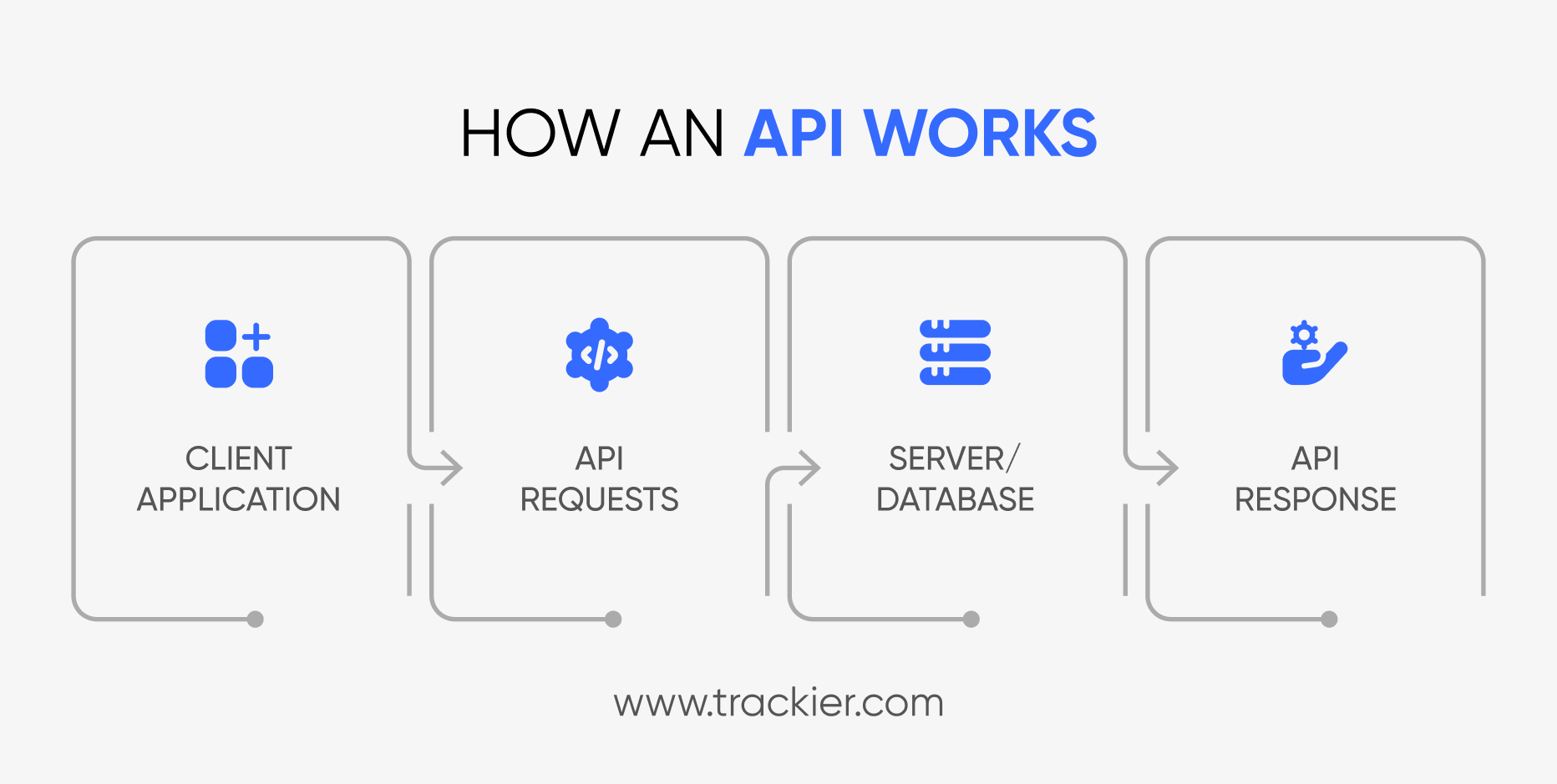An API enables software applications to communicate, share data, and extend functionalities without understanding each other’s internal workings.
What is an API?
An API (Application Programming Interface) is actually the set of rules, protocols, and tools used to allow one application software system to interact with another. It describes the methods and data formats that applications use in sending information to each other.
It will enable various kinds of software systems, such as web-based desktops, and mobile applications, to share data and functionality without having to understand how the other application works.
In simpler terms, an API acts as a bridge that facilitates the exchange of data between applications, making it easier to integrate and extend software functionalities. APIs are fundamental in enabling developers to build new functionalities on top of existing systems, streamline processes, and create a more seamless experience for end users.
How Do APIs Work?
APIs operate by exposing specific endpoints (URLs) or methods that a requesting application can call. These endpoints often represent specific functionality or data that can be accessed. When an API request is made, it usually involves two parts:
- Request: The application or the client sends a request to the API. This could include parameters like the type of data being requested, the format (such as JSON or XML), and any necessary authentication information.
- Response: The API processes the request and sends a response. A response from the API includes either data, a status code, or an error message if there is an issue.
For instance, a weather application may send a request to get data from a weather service API. This will include parameters such as the city name, and the API will send back the current weather for that city.
Types of APIs
There are various kinds of APIs based on the context in which they are used. The main types include:
- Web APIs: These are specifically built to enable communication across different systems across the web. Web APIs are used widely to allow web applications and mobile apps to interact with external services. The prime examples of such interfaces include REST APIs, SOAP APIs, and GraphQL APIs.
- REST (Representational State Transfer) API: A REST (Representational State Transfer) API is a web-based interface that allows applications to communicate over the internet using standard HTTP methods such as GET, POST, PUT, and DELETE. It follows REST principles, ensuring scalability, simplicity, and statelessness, meaning each request from a client contains all the necessary information without relying on previous interactions.
- SOAP (Simple Object Access Protocol) API: SOAP is one of the older protocols that uses an exchange of structured information in web services. SOAP APIs tend to have a lot more inflexibility and structure compared to REST APIs. Additionally, XML is used for communication whereas other protocols include built-in error handling and security protocols.
- GraphQL API: GraphQL is a query language of APIs. It allows the client to inquire about exactly what data is needed. It offers far more flexibility over REST since clients specify which fields and what data they want to fetch, which means under-fetching of data.
- Library/Framework APIs: These APIs provide access to a collection of functions or procedures within a specific programming language, framework, or library. Developers use them to extend the functionality of the platform they are working with. Examples include the Python Standard Library API or the jQuery API.
- Operating System APIs: Through the operating system, applications would be able to communicate with their underlying operating systems. For example, an operating system API can give an application permission to have access to its file system or even network and hardware resources.
- Database APIs: Database APIs describe communication between applications and a database. SQL is an example, as it makes APIs available which would allow access, update, and data management across the database.
Key Components of an API
There are some key components in an API which include endpoint, request methods, request headers, response body, and much more.
- Endpoint: An endpoint is a URL where an API can be accessed by a client application. Each endpoint corresponds to a specific operation or resource within the API. For example, the endpoint for retrieving user information might be /api/users.
- Request Methods: APIs use different HTTP methods to perform actions on resources. Common methods include GET (retrieve data from the API), POST (submit data to the API), PUT (update existing data), DELETE (remove data), and PATCH (partially update data).
- Request Headers: These are metadata sent along with an API request, providing additional information such as authentication credentials, content types, and other settings.
- Response Body: The content returned from an API as a result of a request having been processed. This response body typically contains data being requested or else a message reflecting the success or failure status of the operation performed.
- Authentication: To ensure that data is accessed by only authorized people, many APIs require authentication. This can be done through API keys, OAuth tokens, or username and password credentials.
- Rate Limiting: APIs tend to have a rate limit, which is basically the number of requests that may be made in a given period of time to prevent abuse and ensure fair usage. For instance, 1000 requests per hour.
Common API Examples
Some of the popularly used APIs for real-world applications are social media integration, payment processing, etc.
- Social Media Integration: It allows third-party applications to interact with social media. For instance, Facebook Graph API lets a developer integrate the functionality of Facebook login into an application, share a post, or fetch user information to be utilized in an app.
- Payment Processing: The APIs of payment gateways such as Stripe or PayPal allow e-commerce web applications or even mobile applications to safely make payments.
- Weather Services: Weather APIs provide real-time weather information to Apps, Websites, or systems. Some popular APIs are offered by OpenWeatherMap, by which developers can add weather information to their services.
- Geolocation and Maps: Google Maps API allows developers to add location-based services, including maps, directions, and geolocation, into their applications.
- Messaging and Communication: Twilio’s APIs make SMS, voice calls, and messaging functionality possible in an application. Thus, it offers a convenient method of communication to businesses with their users.
- Cloud Storage Services: Amazon S3 and Google Cloud Storage offer APIs that enable files to be uploaded, retrieved, and managed programmatically.
- Data Exchange: APIs enable different platforms to exchange data without any issues. For instance, a travel website can integrate with flight, hotel, and car rental APIs to fetch data from different sources and display it to the user in a unified interface.








